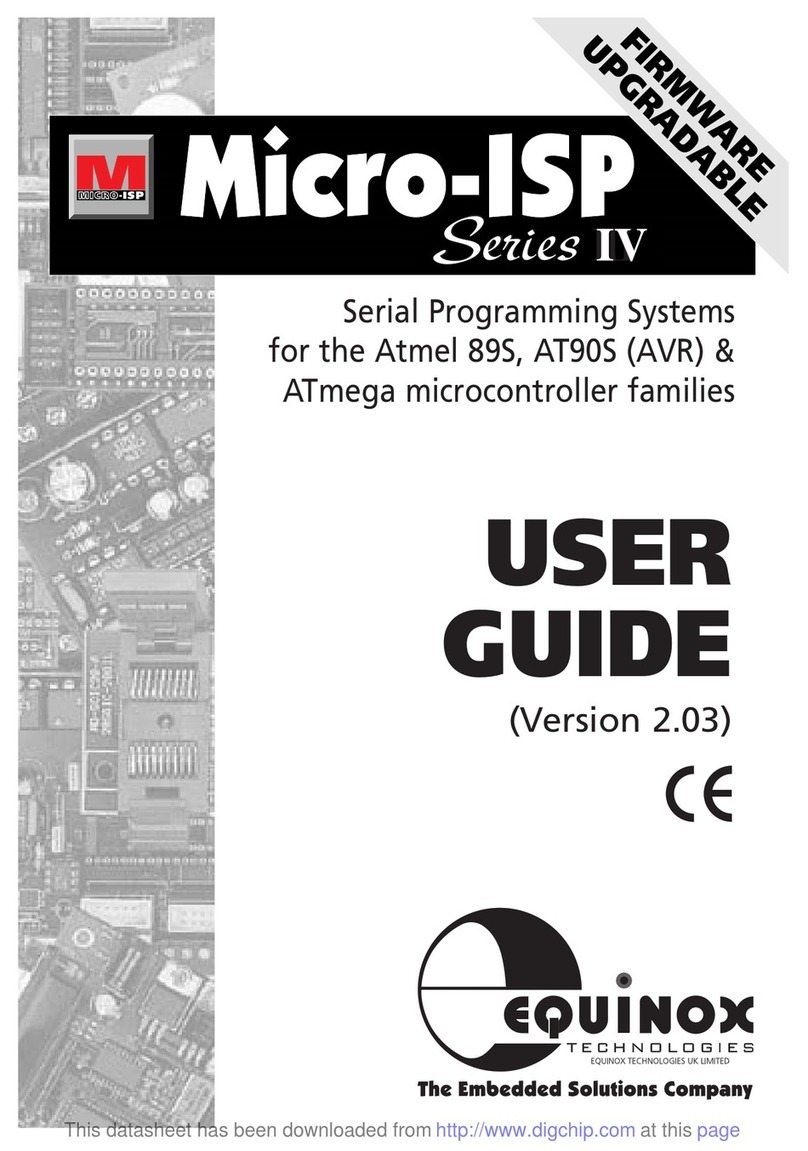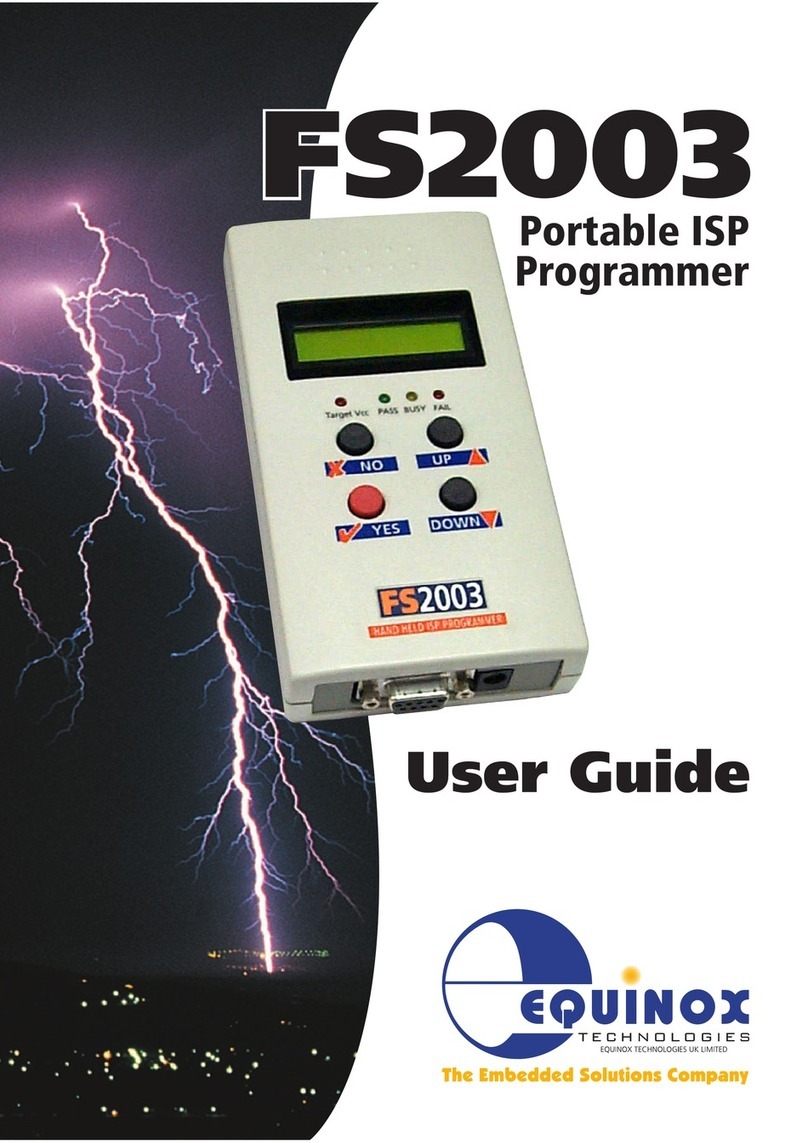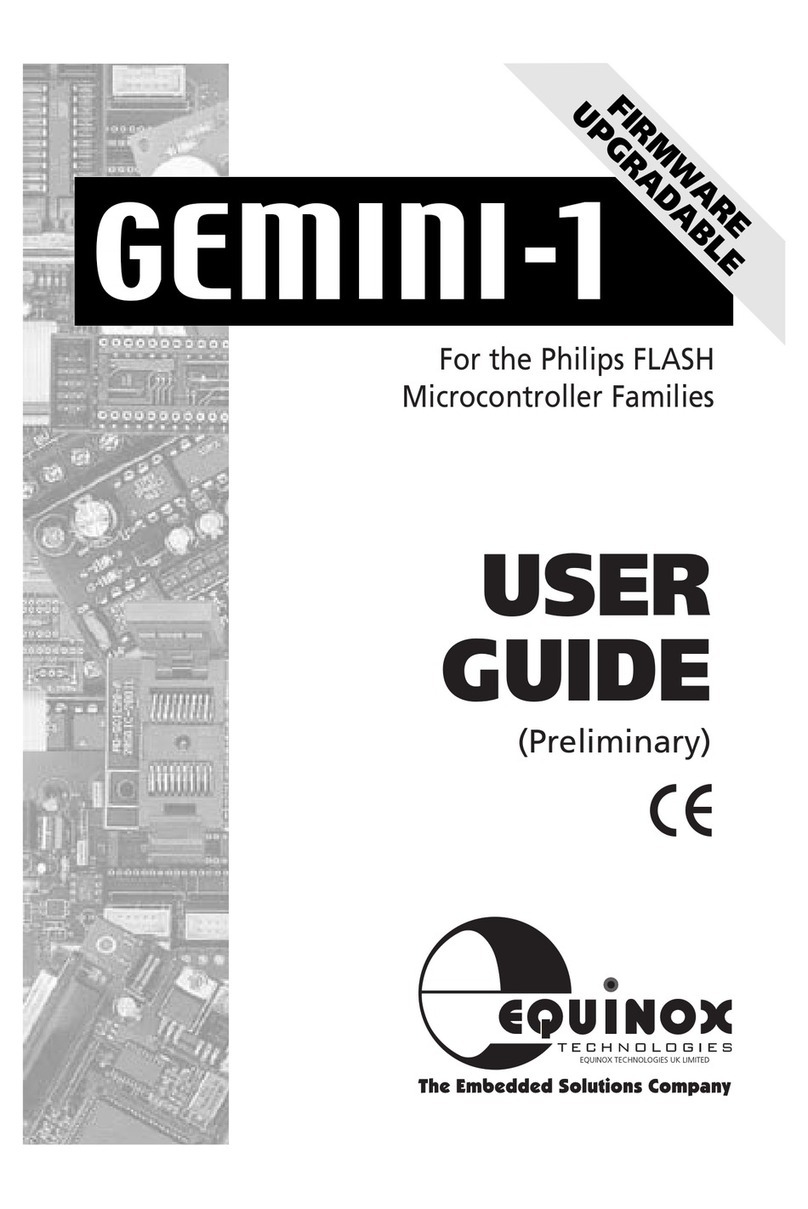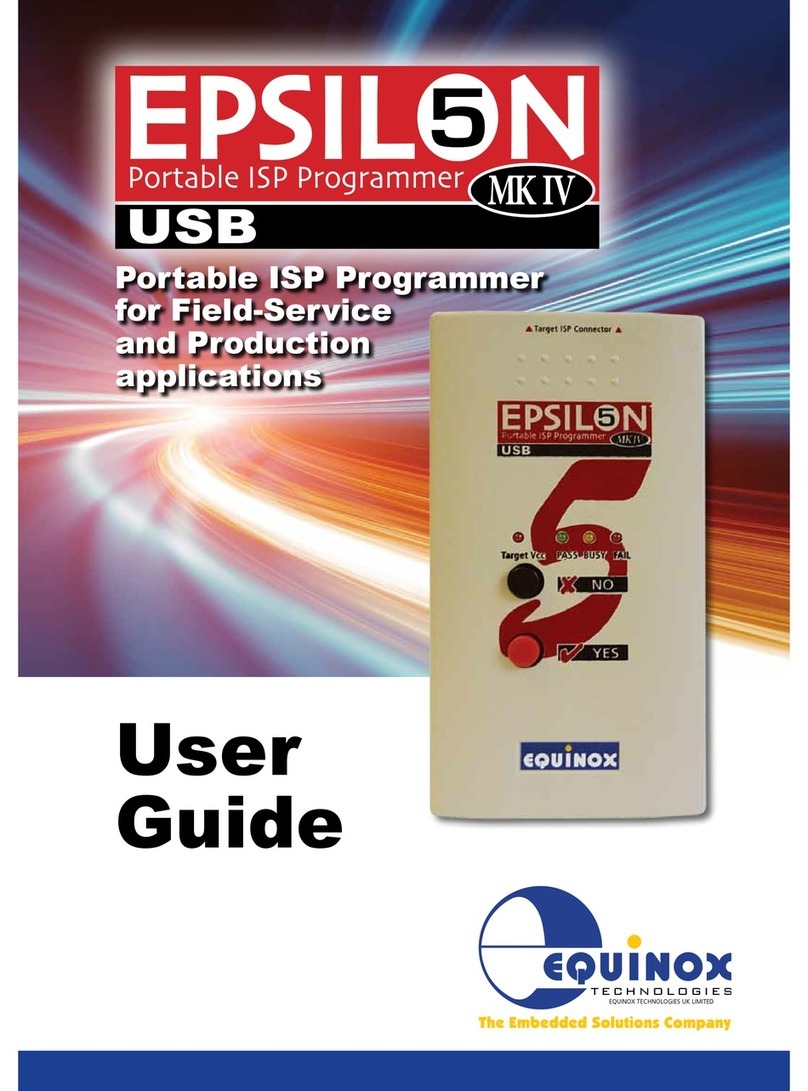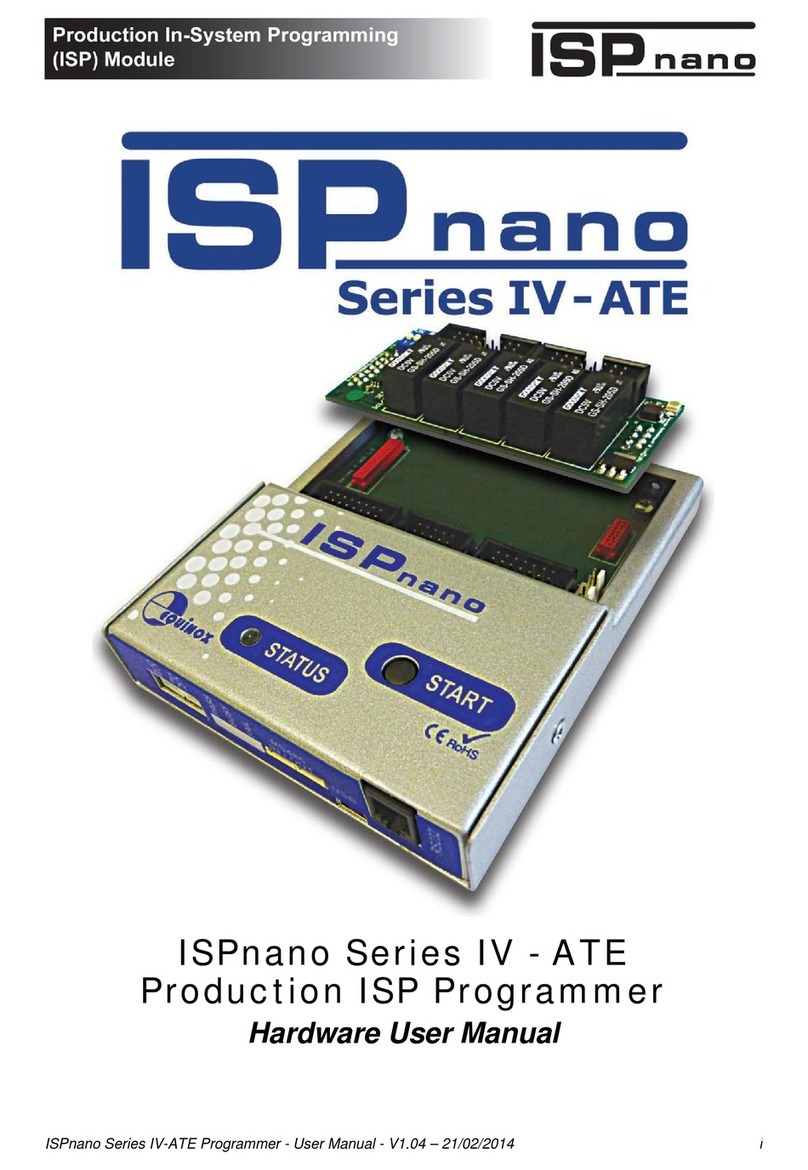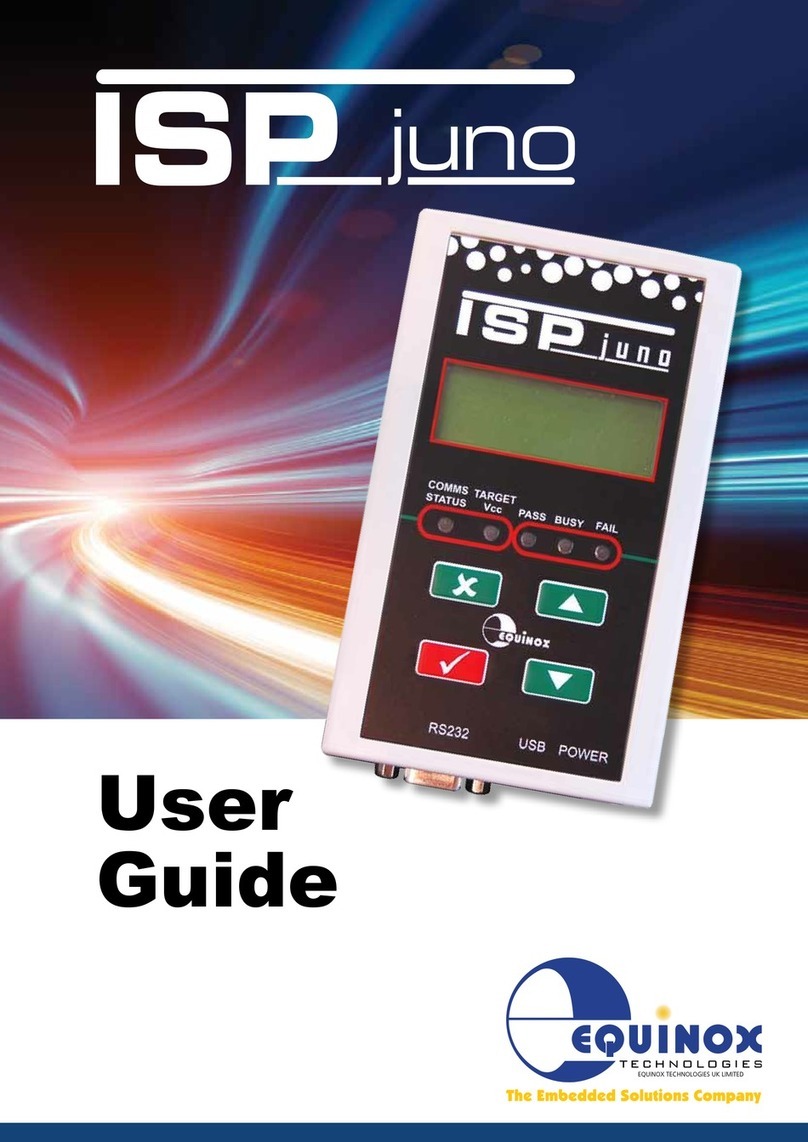
PPM3 MKII Programmer - User Guide - V1.04 - 10th May 2008
Contents
Copyright Information............................................................................................................iii
Equinox Warranty Information..............................................................................................iv
Electromagnetic Compatibility (EMC) Compliance.............................................................vi
Technical Support..................................................................................................................vii
Product Documentation.......................................................................................................viii
1.0 Programmer Overview ......................................................................................................1
1.1 System Contents ............................................................................................................1
1.2 Hardware Overview (external layout).............................................................................2
1.3 I/O Connector Modules...................................................................................................3
1.3.1 Overview ................................................................................................................3
1.3.2 Connector Systems currently supported................................................................4
1.3.3 Programmers supported........................................................................................4
1.3.4 Overview of I/O Connector Modules......................................................................5
1.4 Special Function Modules (SFM) ..................................................................................7
1.4.1 SFM Module - Overview ........................................................................................7
1.4.2 SFM Module – Selection Guide.............................................................................7
1.4.3 SFM Module – how to fit a new module.................................................................8
1.4.4 SFM Module – declaring the module in a Programming Project...........................8
1.5 Programmer dimensions and mounting holes................................................................9
1.6 Programmer Specifications ..........................................................................................10
1.7 Device Support.............................................................................................................14
1.7.1 Devices supported by the programmer................................................................14
1.7.2 Programming Interface to Target Device.............................................................16
2.0 Getting Started Guide......................................................................................................17
2.1 Overview.......................................................................................................................17
2.2 Hardware Installation Procedure..................................................................................18
2.3 Software Overview and Installation..............................................................................22
2.3.1 Software Overview...............................................................................................22
2.3.2 Programmer Control Mechanisms.......................................................................23
2.3.3 Software Installation.............................................................................................24
2.4 Programmer Operating Modes.....................................................................................25
2.5 Development Mode (EDS)............................................................................................27
2.5.1 Overview ..............................................................................................................27
2.5.2 Creating a new EDS (Development Mode) Project.............................................27
2.5.3 Testing an existing Programming Project in a Project Collection in EDS
(Development Mode).....................................................................................................28
2.5.4 Overview of EDS – Development Mode..............................................................29
2.5.5 Buffer Window - Control Buttons..........................................................................31
2.5.6 Example of using EDS.........................................................................................32
2.6 Standalone Keypad Mode ............................................................................................33
2.6.1 Overview ..............................................................................................................33
2.6.2 Push Button Functions.........................................................................................35
2.6.3 Standalone Keypad Operation – step-by-step guide...........................................36
2.6.4 Standalone Keypad Operation – Flowchart.........................................................39
2.6.5 Programmer Status LED’s...................................................................................40
2.6.6 Remote Status LED’s...........................................................................................41
